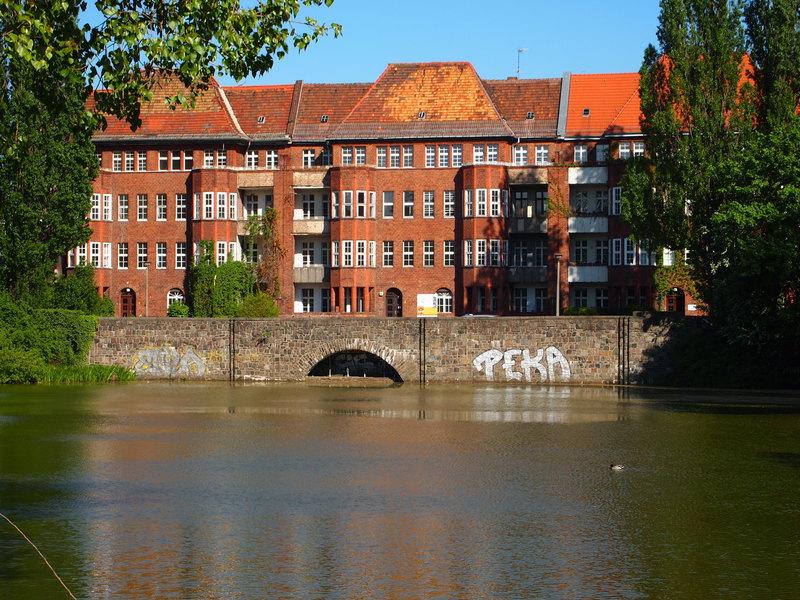Day 5: The cemetery records
I had kind of a down day on Monday. The heat was back and I was feeling pretty wiped out from my busy first days in Berlin. So I won’t regale you with any big adventures in this installment. Instead I will focus on the first hard results from my family history investigations.
They came via email from the archivist at the Zentrum Judaicum. First came the disappointing news that I won’t be able to visit the archive in person on this trip. I made the mistake of not arranging for a visit before my arrival and it turns out that their research desks on site are fully booked this week. However, the archivist was kind enough to look up the Weißensee Cemetery records for our family members, and they were jam-packed with important new information.
The big news is that Betty Wohlgemuth did not take her own life. She died of an unspecified natural cause In a clinic on Trautenaustraße. Her burial at Weißensee was arranged and paid for by a first cousin who was previously unknown to us. This was Amalie Katz, who was a daughter of the brother of Betty’s father. Amalie was born in the town of Preussisch Holland in East Prussia, midway between Elbing, where the Wohlgemuths later lived, and Heilsberg, where the Katz family originated. If you are looking on a map, the modern name of the town is Pastek. Heilsberg is now Lidzmark Warmnski and Elbing is Elblag.
Amalie was six years older than Betty, and she had lived in Berlin for many years. I am searching for more information about her parents and possible husband (if she married, it was to another Katz) but have not yet turned up anything on those scores. However, we do know about her death, and it suggests the fate Betty would have faced if she had not passed away naturally.
Amalie Katz was deported from Berlin to Theresienstadt on August 17, 1942. This was supposedly the good concentration camp where many elderly Jews were sent, but it wasn’t good for Amalie. Five weeks later, on September 26, she was sent on to the Treblinka death camp where she probably perished soon after her arrival. She was 73 years old at the time of her death. I have her Berlin address and we may want to consider sponsoring a Stolpersteine there to commemorate her life and sad end.
Next, we already knew that Betty’s husband Isaak Wohlgemuth passed away in August 1929. The new information is that he resided at Woelkpromenade 6 in Weißensee, the building next door to the apartment where the Ringels lived and that I visited the other day. The funeral arrangements were made by Hermann Ringel.
It is interesting that Isaak’s death came in the same year that the Ringels moved from Weißensee to Charlottenburg, possibly precipitated by that event. Betty also later moved to an address in Wilmersdorf, but I don’t yet have a year for that. Joanne has a memory from Helga that Betty lived in the same building as the Ringels, which I had discounted because she is not listed in Charlottenburg. But now we know that she did live next door to her daughter and son-in-law (and granddaughter) when they all resided on the Woelkpromenade.
The photo above, which is not mine, shows a view across the pond to Woelkpromenade 5 and 6.
There is also new information about Hermann’s death, and it contradicts something I thought I discovered a few weeks ago. The arrangements for his burial were made by his business partner, identified as Erich Wasserreich, about whom the archive has no further information. I thought I had identified the partner as Isser Reichenthal, so this is contradictory information that opens a new avenue of investigation.
Presumably, Wasserreich was the scoundrel who weeks after arranging Hermann’s burial absconded with the money Hermann had set aside for the family’s escape from Berlin.
So that answers one of the big questions I came here to learn, about Betty’s cause of death and whether she may have taken her own life. She did not. On the other major question, details of Hermann’s businesses and their “aryanization,” the ZJ archivist was not able to help. The information that files supporting the entries in the Database of Jewish Businesses in Berlin are held at the ZJ is not correct. The archivist says that these files are located at the Landesarchiv Berlin, which will be my next stop.
In addition to those files, if they are there, the Landesarchiv also holds records about postwar restitution cases. We know that Elly received restitution payments from the German government so hopefully there will be information that can be found about her case.
That’s all I have for Day 5, when I made my first big breakthrough without ever leaving the comfort of my Berlin apartment.

